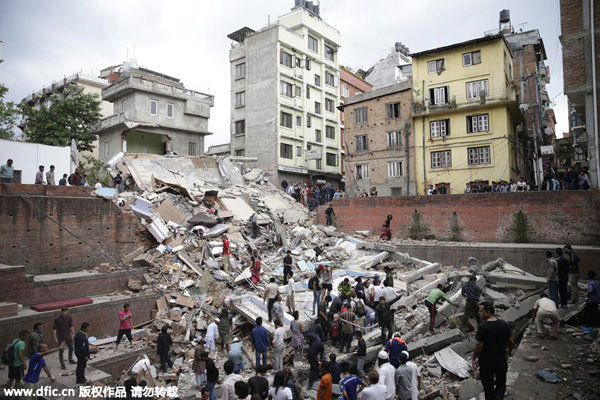 |
|
People search for survivors stuck under the rubble of a destroyed building, after an earthquake caused serious damage in Kathmandu, Nepal, April 25, 2015. [Photo/IC] |
Nepal's devastating earthquake was the disaster experts knew was coming.
Just a week ago, about 50 earthquake and social scientists from around the world came to Kathmandu, Nepal, to figure out how to get this poor, congested, overdeveloped, shoddily built area to prepare better for the big one, a repeat of the 1934 temblor that leveled this city. They knew they were racing the clock, but they didn't know when what they feared would strike.
"It was sort of a nightmare waiting to happen," said seismologist James Jackson, head of the earth sciences department at the University of Cambridge in England. "Physically and geologically what happened is exactly what we thought would happen."
But he didn't expect the massive quake that struck Saturday to happen so soon. The magnitude 7.8 earthquake killed more than 1,900 and counting and caused widespread destruction.
"I was walking through that very area where that earthquake was and I thought at the very time that the area was heading for trouble," said Jackson, lead scientist for Earthquakes Without Frontiers, a group that tries to make Asia more able to bounce back from these disasters and was having the meeting.
A Kathmandu earthquake has long been feared, not just because of the natural seismic fault, but because of the local, more human conditions that make it worse.
The same size shaking can have bigger effects on different parts of the globe because of building construction and population and that's something the U.S. Geological Survey calculates ahead of time. So the same level of severe shaking would cause 10 to 30 people to die per million residents in California, but 1,000 maybe more in Nepal, and up to 10,000 in parts of Pakistan, India and Iran, said USGS seismologist David Wald.